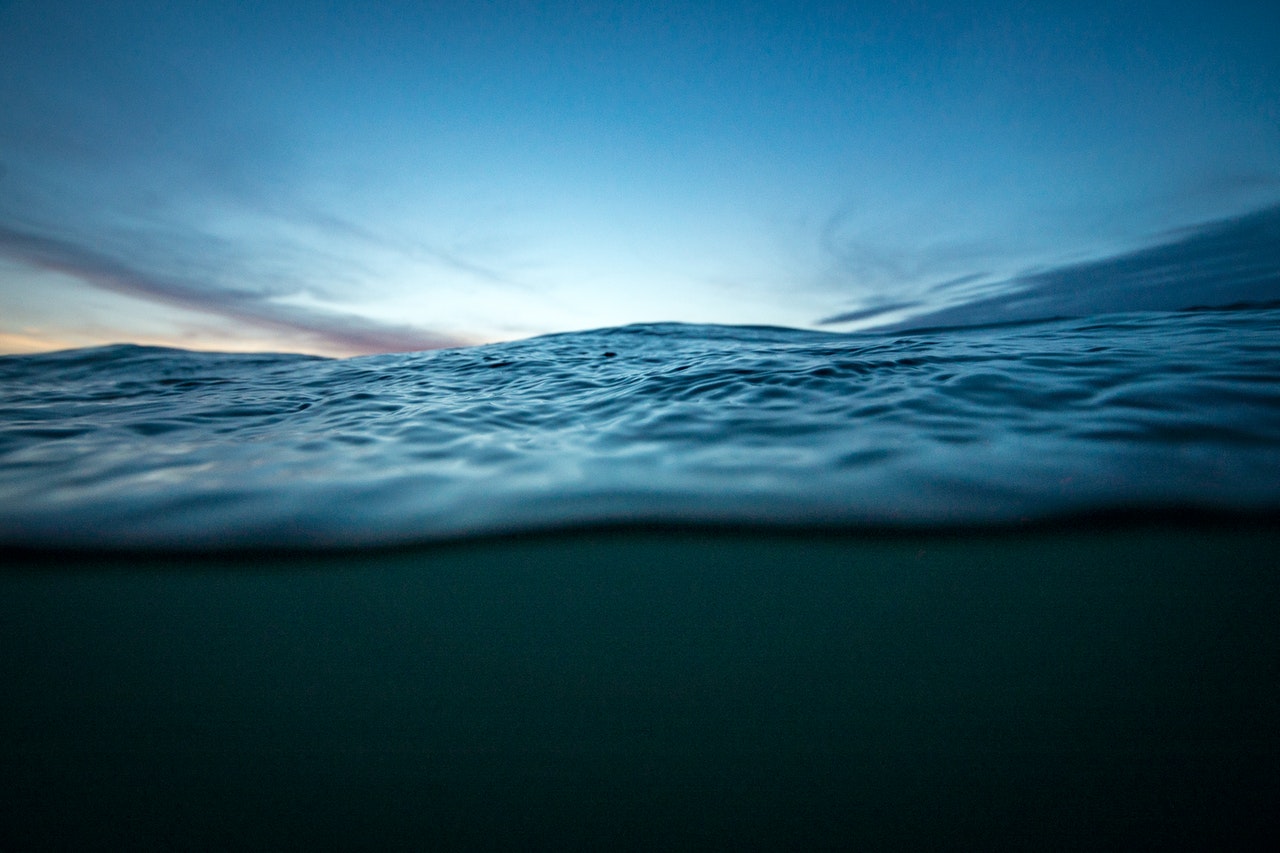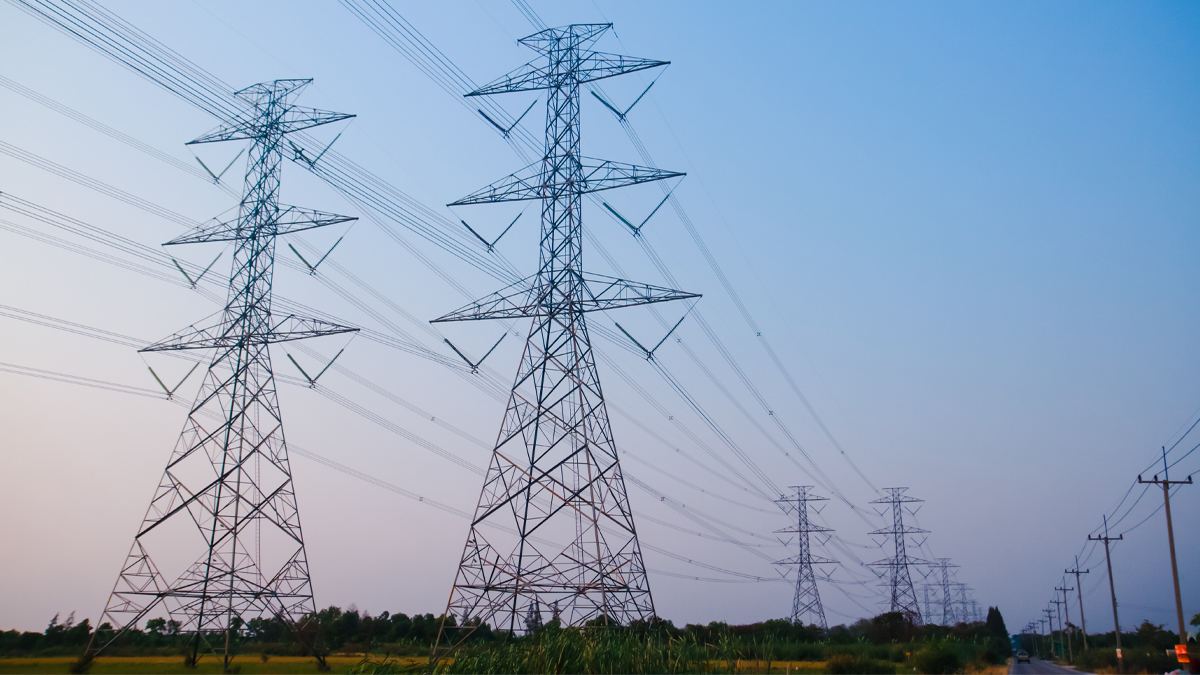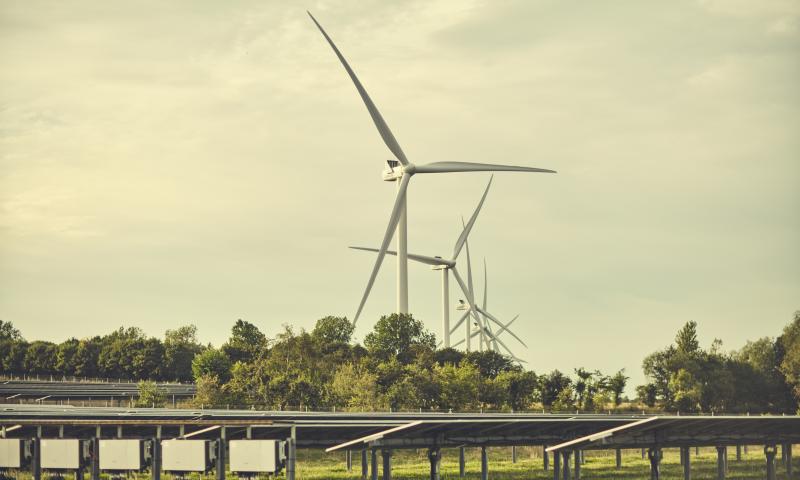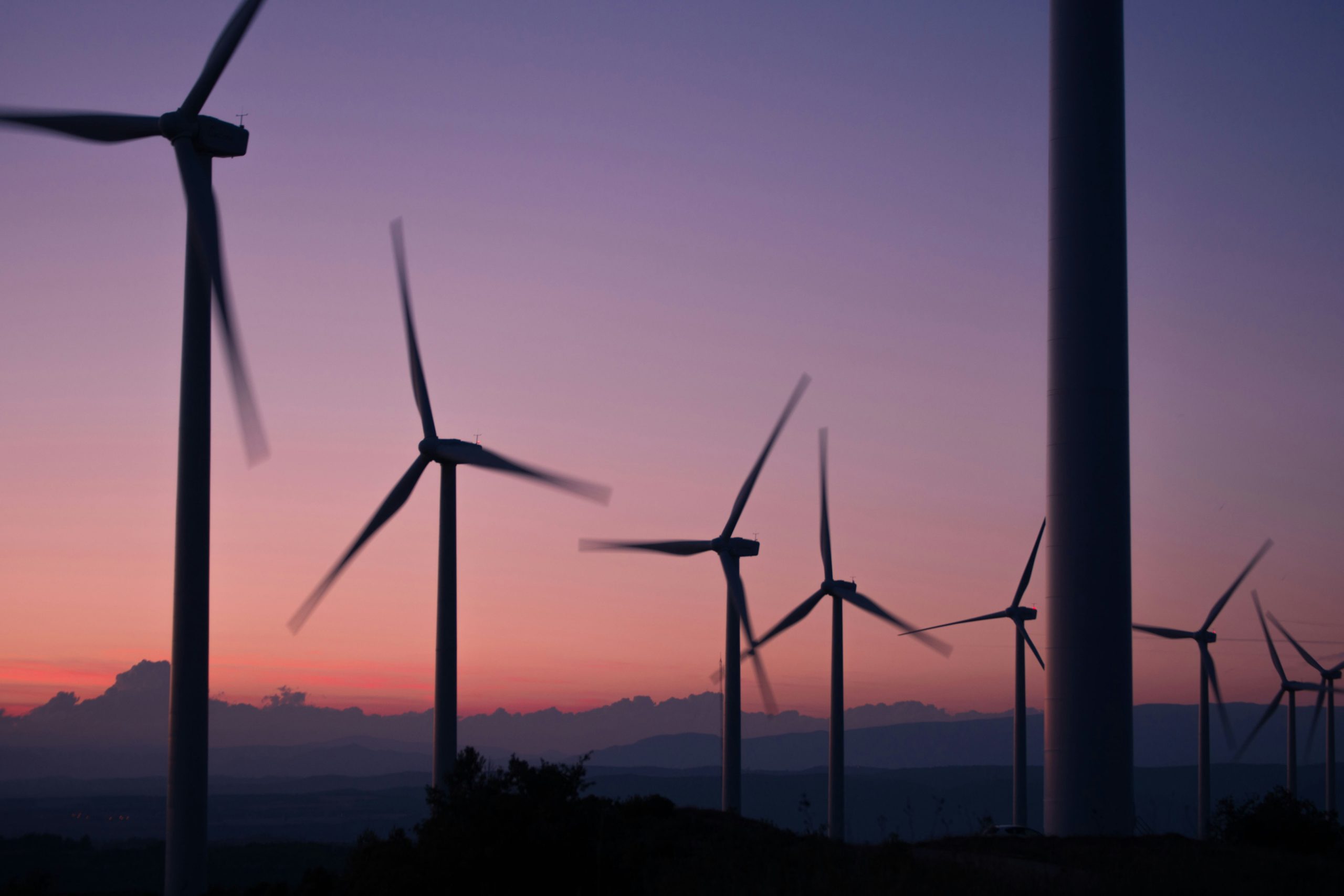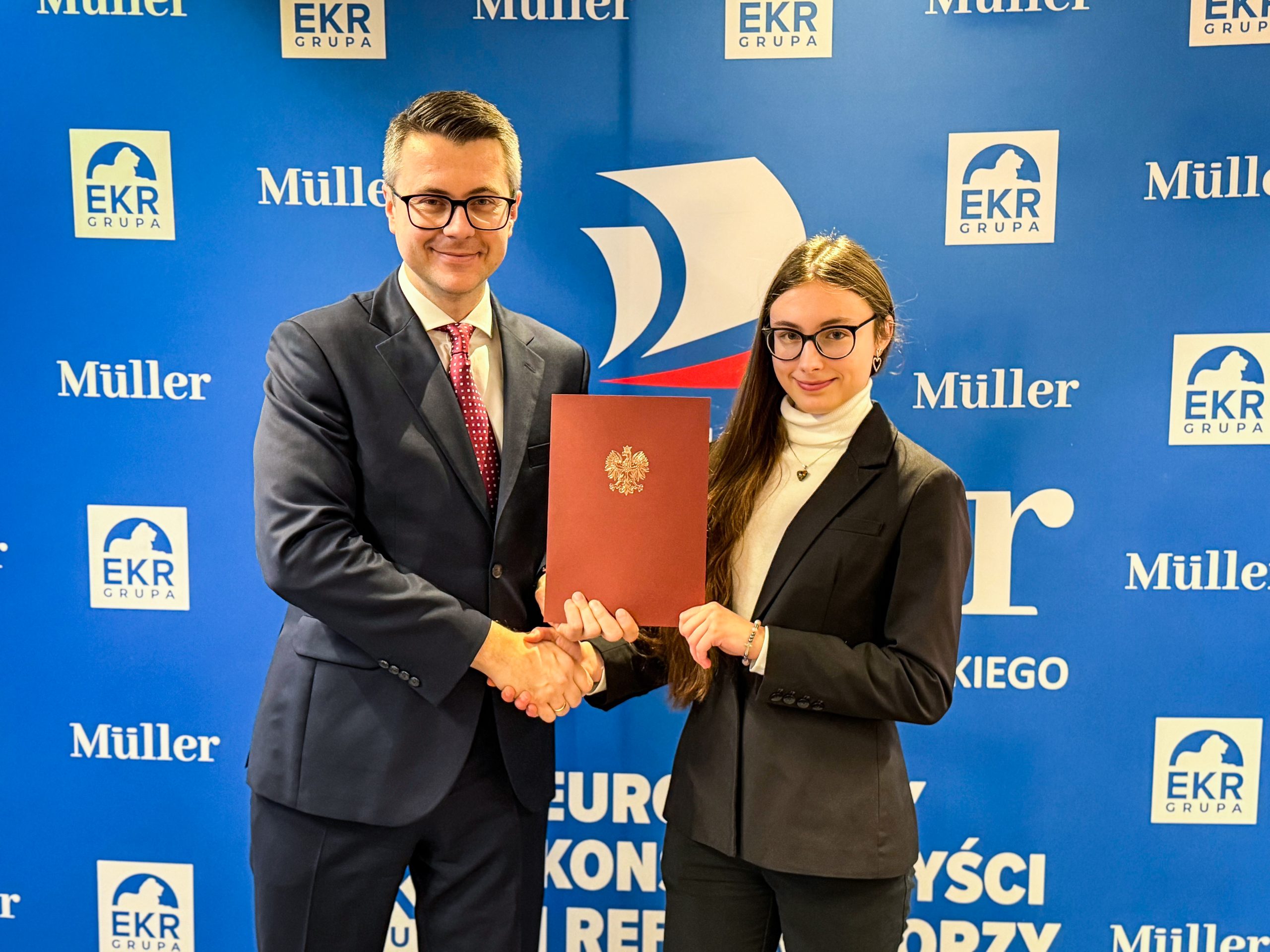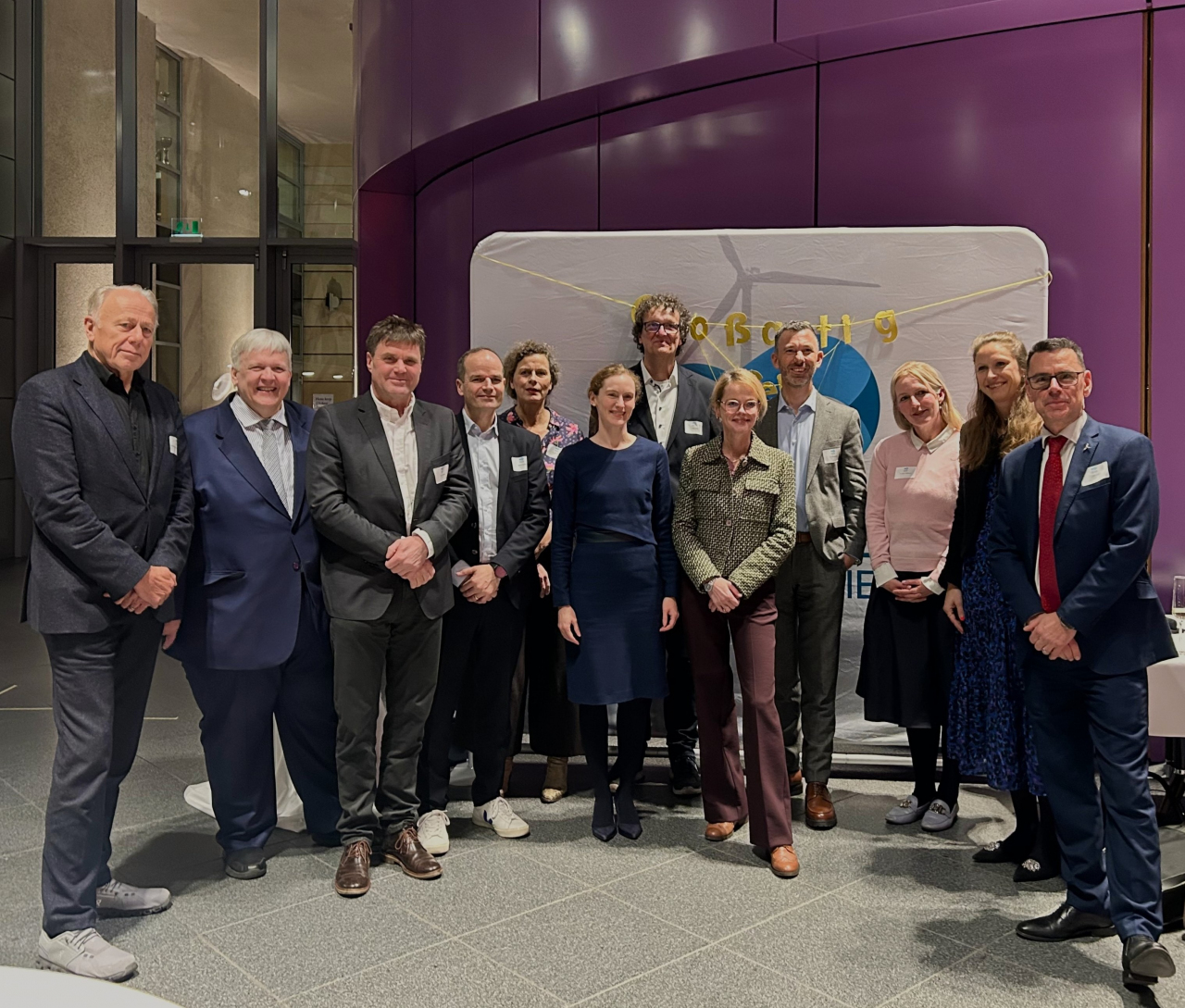Author: Rafał Miętkiewicz, PhD, assistant professor at the Faculty of Command and Maritime Operations, Polish Naval Academy of the Heroes of Westerplatte in Gdynia, expert of the Ignacy Łukasiewicz Institute for Energy Policy
Establishment of the offshore wind energy (OWE) sector in Poland is a chance for multifaceted social development, building national energy security, and creating smart specializations. After completing the necessary permits, the work on Polish offshore wind farms (OWF) will enter a new phase, including the physical construction of the first offshore wind farms. This phase will be implemented directly on the sea, on specific investment plots defined in the Spatial Development Plan for the Polish maritime areas. These activities will involve significant seabed intervention and, in addition to the selected turbine and substation foundation system, will include the laying of hundreds of kilometers of multipurpose transmission lines. It should be kept in mind that the electricity produced in the contiguous zone and the exclusive economic zone will be transmitted through submarine lines and will enter the national power system in several places. An interesting concept is also the offshore connection of the OWF with the energy systems of the Baltic countries. This is an important piece of information that increases the amount of seabed space that will be used to incorporate OWE into the national, and perhaps the Baltic, energy mix.
For some time now, attempts have been made to raise the issue of hazardous objects lying on the seabed of the Baltic Sea in the form of shipwrecks with hazardous contents, chemical weapons and conventional ammunition deliberately dumped as part of the post-war neutralization of huge reserves of lethal weapons, precisely in the context of implementing investments in the offshore wind sector. For many years, the above issues were the area of interest almost exclusively for scientists conducting research, on issues related to the location of chemical and conventional weapons, as well as their impact on the environment. To the average citizen the problem is also associated with actions conducted by Explosive Ordnance Disposal (EOD) Teams (Navy), counted in hundreds of interventions and thousands of neutralized objects. For some time now, actions in this matter have been increasingly undertaken by local authorities, national, and European politicians. There are also social initiatives that familiarize us with the problem (#BalticForGenerations).
The purpose of this paper is to attempt to answer the question: Do sunken chemical and conventional weapons pose a serious threat to the implementation of projects related to the development of offshore wind energy in Polish maritime areas?
The article has an informative character and its aim is to encourage people to get to know the results of works undertaken, also by numerous Polish specialists who have been researching the discussed issues for many years. According to the author, building awareness of OWE development should be based on a holistic perception of this multi-faceted issue. Undoubtedly, the issues of safety of investment implementation, in the sense of the possibility of occurrence of hazards and their potential effects, are only hinted at in available analyses and industry reports.
It is worth noting that the need to carry out works related to cleaning the waters of the Baltic Sea from hazardous materials is an important factor in the development of the overall Polish maritime economy, as indicated by the Strategic Concept for the Maritime Safety of the Republic of Poland (2017). This document identifies vital national interests in the maritime domain and opportunities related to the use of access to the Baltic Sea in the primary spaces of human activity at sea. The question of relevance to the state’s future energy system or hydrogen programs cannot be ignored here. Wind energy, as a long-term investment expected to consume approx. PLN 130 billion, is becoming an integral part of Polish maritime interests. In order to witness an effective (timely) implementation of development projects and, later on, stable operation of the OWF, steps should be taken today to build an adequate security system.
Photo. Dumping of ammunition at sea after World War II



Source: www.hakaimagazine.com/features/weapons-war-litter-ocean-floor/, www.iwm.org.uk/collections/item/object/205208193, www.naturphilosophie.co.uk/what-lies-beneath-the-toxic-legacy-of-post-war-ammunition-dumping/
According to the author, it is justified to state a thesis that: It is only a matter of time when investors implementing their projects related to the development of offshore wind energy, in the Polish maritime areas, and putting the problem more broadly in all sub-basins of the Baltic Sea, will come across dangerous objects of military origin, including chemical weapons.
The available opinions express confidence that offshore wind farm sites contain a deposit of hazardous facilities, including chemical weapons, and the question is only about the quantity of these substances. However, it should be noted that some sites may be buried in bottom sediments and thus difficult to locate. It is important that project plans (schedules) anticipate the possibility of these types of hazards and that investors are aware of the likelihood of encountering them. Another issue is knowledge of the procedures, terms of reference, and equipment of the services and administrative bodies responsible for dealing with dangerous finds. Above all, you need to know how to behave (what to do and what not to do), which services should be notified first, how to secure personnel and the site, and, perhaps most importantly, how to help potential victims. Thus, the potential risk related to the occurrence of hazardous objects in the OWF areas of particular stakeholders should be minimized to an acceptable level even before the physical foundation of the OWF elements takes place. One of the basic elements is knowledge grounded in marine research.
The scale of the problem of dumped chemical and conventional ammunition
To exactly amount the ammunition dumped in the Baltic Sea is practically impossible. The scale of the problem, however, is illustrated by the estimates which indicate that 360,000, to even 385,000, tonnes of ammunition, representing the dark depository of World War I and World War II, are buried at the bottom of the Baltic Sea. Melting of said ammunition was considered a quick and inexpensive way to neutralize the threat of the contents (chemical ammunition), and to prevent reuse. Over 300,000 tonnes of the ammunition deposited at the bottom of the Baltic Sea are expected to be conventional ammunition, which unlike chemical agents, were often dumped in shallow waters. Both types are found in the same locations (both types were melted together).
By chemical ammunition we mean ammunition whose primary content is a chemical warfare agent (CW). Combat poison agents, on the other hand, are chemicals designed to injure the enemy as a result of their specific properties and actions. The overarching term in this case is chemical weapons.
The original idea of getting rid of the chemical weapons was to sink them at great depths in the natural depressions of the bottom of the Baltic Sea, in the so-called “depths”. The largest chemical weapons dump remains the area east of the Danish island of Bornholm, where it is estimated that at depths ranging from 70 to 105 meters, nearly 35,000 tonnes of weapons with a content of approx. 13,000 tonnes of CW agents Another, at least 2,000, tonnes of chemical weapons rests in the Gotland Deep, scattered on a seabed of approx. 600 hectares. Resources dumped in the Baltic Sea include approx. 600,000 pieces of ammunition (artillery shells 105-150 mm, air bombs weighing 50, 250, 500 kg, mines, fuzes, smoke bombs and grenades), as well as containers (mainly barrels and canisters – representing a small part of the deposit). Air bombs are considered particularly dangerous because of the quality of the materials they were manufactured from and the small thickness of their shells, as well as artillery shells of 105 and 155 mm caliber, which make up the largest deposit of ammunition. Their corrosion rate was estimated to be approx. 90 years to full unsealing (20 years from present).
However, the results of the historical analysis indicate that the chemicals also went overboard during the sea passage on the routes leading to the final destinations from the storage site (Wolgast on the island of Usedom). Some of the cargo was sunk with the vessels and often escaped beyond the holds as evidenced by sonar results indicating ammunition lying around the wrecks. Some of the overboard dumped resources were in wooden crates that may have drifted before finally resting on the seafloor. These interesting issues have been described by Polish researchers dealing with the mentioned subject (Kasperek, Fabisiak, Michalak, Beldowski, and others). The entire South Baltic area is considered to be a chemical ammunition occurence region. Over the years, as a result of research and incidents involving chemical ammunition,6 areas of chemical ammunition presence have been selected in Polish maritime areas. Their total area is approximately 440 km2 and includes locations at Dziwnow, Kołobrzeg, Darłowo, Hel and an area near the island of Bornholm. At the same time, assessments say there are up to 60 potential sites containing between 10,000 and 12,000 pieces of ammunition of various calibers, types, and purposes. It is estimated that the seafloor of the identified areas rests approx. 60 tons of chemical ammunition containing primarily mustard gas (iperite). The Gulf of Gdansk hides approx. 30 tonnes of hazardous substances (Gdańsk Deep – chemical weapons containing at least sulfur iperite and arsenic hydrogen – landfill area of about 1,035,000 m2). Similarly, the indicated substances were discovered in the Slupsk Trough basin. The poisonous deposit is made up of bombs, artillery shells, mines, as well as containers for storing warfare poisoning agents in the form of barrels, and loose lumps formed as a result of decades of contact with seawater. Combatant poisoning agents from the group of paralytic and convulsive, scalding, suffocating, general poisoning or irritating, pose a serious threat to humans and the marine ecosystem. It is indicated that the threat to the marine ecosystem is primarily from agents that contain arsenic (Adamsite, Clark I, Clark II, luisite) and iperite, which has also been mixed with arsenic-containing agents. It has been proven that explosives such as TNT degrade into carcinogenic compounds, iperite into chemical substances – carcinogenic, mutagenic and neurotoxic.
Fig. Routes of passage of units with chemical and conventional weapons and areas of their dumping (left) and
chemical ammunition dumping areas and incidents involving chemical ammunition (Polish maritime areas)


Source: CHEMSEA and Fabisiak J., Jurczak W., Szubrycht G., Zaremba W., (2018). Ecological Safety Of The Baltic Sea In The Aspects Of Corrosive Reprocessing Of Containers With Toxic Warfare Agents, Journal of KONBiN, 45, 2018.
Studies on the effects of chemicals on living organisms resulted in the identification of acceptable consumption standards, groundfish and pelagic fish from Baltic fisheries, as well as the predicted time of release of hazardous substances due to the means of transfer (ammunition of various calibers, barrels, etc.), and the depositional environment (deep water bodies covered by layers of bottom sediments, etc.). At the same time, it should be noted that incomplete data make it impossible to determine the exact total amount, types, and locations of chemical weapons resting on the bottom. Supplementing this knowledge is considered time consuming and expensive. According to 2020 estimates (the then Ministry of Maritime Economy and Inland Navigation on the basis of estimated calculations based on the costs and time of the execution of the investment entitled “Modernization of the Swinoujscie-Szczecin waterway to the depth of 12.5 m”,) it results that the complete inventory of the basins under the jurisdiction of the Republic of Poland would take 1 375 years and would cost approx. PLN 515.7 billion.
It is noteworthy that despite the fairly defined boundaries of the official ammunition storage areas, reports of ammunition detection incidents are located at considerable distances and in virtually all directions from the central positions. This is likely to be true even for smaller sites, such as those identified along the Polish coast. According to scientists, the physical extraction of all the ammunition lying on the bottom of the Baltic Sea is unrealistic, hence the need to create an efficient system to assess the order of action in relation to threats posed by chemical and conventional weapons.
In 1993, The Helsinki Commission formed a Group (HELCOM CHEMU) to produce a report (1995) identifying chemical weapons dump sites and estimating their impact on the marine environment. In subsequent years, initiatives established to deepen analysis (HELCOM MUNI) and estimate environmental risk (HELCOM SUBMERGED) were undertaken.
The results of the CHEMSEA project (2015) indicated that chemical ammunition does not pose an immediate threat, but dump sites will be an ongoing problem. According to scientists, containers of dangerous substances may not be sealed for more than 150 years. It all depends, of course, on how and where you store them. The corrosion and toxicant extraction time for large caliber artillery shells will be calculated in a completely different way than when dealing with barrels of standard plating thickness. At the same time, the point and diffuse character of contamination sources with a significant negative impact on the economy was indicated. The DAIMON project, a continuation of previous work, focused on developing specific tools to support the decision-making process on how to deal with chemical ammunition on the seabed of the Baltic Sea.
Fig. South Baltic areas and threats from chemical ammunition and sea mines identified by HELCOM


Source: Helcom(https://maps.helcom.fi/website/mapservice/index.html)
Further development of technologies based on artificial intelligence methods using huge amounts of various data collected and still being acquired (condition of objects, contamination of sediments, concentration of compounds as a function of distance from sources, oceanographic data, distribution of currents and salinity, oxygen concentration, condition of living organisms) seems to be beneficial in order to estimate risks connected with the impact of dumped ammunition and, as a result, to make specific decisions (excluding a given region from exploitation). The data should be available through a user application for both maritime administration of coastal countries and commercial users of marine resources or tourism. Data acquisition work could be greatly aided by the use of commercially available autonomous underwater vehicles (AUVs). It is worth referring to the military experience and, as part of the development of dual-use technology, use the task modules used so far for search, classification, and identification of underwater objects. With appropriate investment in development, a surface vehicle (unmanned) could be created that could be the basis for underwater platforms (AUV, ROV), which would increase the effectiveness and efficiency of the work carried out, allowing for time-consuming missions while ensuring human safety and reducing the cost of the entire operation. Another idea might be to use swarms of these types of vehicles.
In previous years (2017), there were some calculations and time calculations for cleaning the seabed from chemical weapons lying in Polish sea areas. The cost of the operation related to the construction of a specialized unit responsible for the neutralization of objects directly at sea, as well as the establishment and operation of an administrative body, was estimated at 120 million euros. The operation time was expected to be 6 to 8 years.
In 2020, a report by the Supreme Chamber of Control (NIK) (Countering the Risks Resulting from the Backfilling of Hazardous Materials at the Bottom of the Baltic Sea) appeared. He pointed to omissions in areas of needed action on hazardous substances that contributed to the growing threat of environmental disaster. The shortage of appropriate equipment for neutralizing hazardous materials taken from the seabed, as well as the lack of comprehensive recognition of the locations and scale of threats were pointed out.
The issue of chemical weapons dumped after World War II was the subject of an appeal to the authorities of the European Union and the Polish government, which was adopted by the Pomorskie Voivodeship Assembly (Sejmik Województwa Pomorskiego) in May 2021. Thus, the issues of threats, so far addressed mainly by the scientific community, have been addressed by government representatives at various levels.
With the European Parliament’s adoption, in 2021, of a resolution calling on member states to jointly solve the problem of chemical weapons dumped in the framework of EU and NATO-led operations, the issue has gained international scope in the political sense. Expect to see further concrete actions related to the placement of specific amounts of money to fund research, development of effective technologies for safe mining, and disposal of hazardous facilities.
Marine mines
A special type of threat in the Baltic Sea is sea mines. Estimates from the Baltic countries (mainly Sweden) indicate that in combat operations between 1848 and 1945, between 165,000 and as many as 180,000 sea mines were deployed in 2,200 minefields in the Baltic Sea . Between 10 and 35% (the upper maximum indicated, with most sources estimating 30% for the entire Baltic Sea and up to 80% for selected areas) of sea mines still remain in the Baltic Sea. Thus, it can be assumed that between 16,000 and 61,000 sea mines, remnants of armed conflicts, remain in the Baltic Sea. Assuming data from the 1990s for Polish maritime areas, calculations indicate a total of 2283 mines laid, of which 1627 were non-contact mines, 637 contact mines, and 19 minefield protectors.
It should be noted that sea mines pose a threat mainly as objects containing considerable amounts of explosives. While their basic combat characteristics have been significantly minimized in the vast majority of cases as a result of the passage of time (depletion of power batteries in the case of non-contact mines) and the impact of the aggressive marine environment (loss of positive buoyancy due to corrosion or coating by marine organisms), they contain a large measure of explosives. There have also been cases of finding fully operational contact naval mines from the World War I period, however, the viability of the so-called “contact mines” used in these mines is unknown. Hertz horns are estimated to be even more than 100 years old. Commonly found in Polish waters, German and British bottom mines contain from 430 kg (British mine Mk VI – explosive material – amatol) to 696 kg (German mine GC – explosive material – hexanite) of explosives. Such mines, depending on many factors (e.g. depth, type of bottom, weight and type of explosive), can cause danger to ships and hydro-engineering facilities within a radius of approx. 200 m to even over 1000 m.
Photo. Hazardous objects of historical origin (sea mines, artillery shell, deep-sea bombs, and the Tall Boy bomb, neutralized by Polish Navy forces)

Source: Materials of the Polish Navy
For many years there have been operations in the Baltic Sea carried out by multinational teams of mine countermeasures (MCM) forces, which are a good example of effective cooperation. These activities also include the full use of analyses concerning the route of marine communication lines, marine resource extraction (marine fisheries), depth distribution, or historical data (their reliability, quality of information, or so-called threat density). Failure to recognize or, even worse, underestimating the risks associated with hazardous facilities can have a significant impact on the implementation of key programs of both national and transboundary importance. The situation is perfectly illustrated by a saying used during the meetings of specialists dealing with the selected issue of this study connected with the problem of sea mines in the Baltic Sea (Baltic Ordnance Safety Board – BOSB), which says that the more we know about the mine action in the Baltic Sea, the worse the picture of the situation reveals itself to the researchers (the more we know – the worse it gets…). The situation is similar regardless of the objects covered (artillery ammunition, chemical weapons, torpedoes, depth bombs, and others). Only reliable knowledge builds awareness and ultimately allows to significantly reduce the level of threats through their recognition, localization, development, and improvement of methods for their neutralization. Scientific arguments are also used to combat catastrophic visions of ecological hecatomb. This is particularly important when huge sums of money are involved in the implementation of economic projects, including those in the area of OWE. Secondly, it provides an estimate of the potential time available to the international community to neutralize the problem, giving space to search for effective technologies to deal with the challenges.
Hazardous facilities and offshore wind energy
Offshore wind farms should be regarded as large-surface structures affecting the seabed not only through, for example, foundations driven several dozen meters deep into the seabed, but also as offshore transformer stations and finally, kilometres-long sections of power cables for various purposes, including connection cables leading out the produced electricity to the onshore power system. This perception of the problem greatly expands the geographic reach of the threats and increases their scope. This is because different threats should be expected in areas much distant from the shore (and Polish wind farms will belong to this type of facilities), and others in the coastal zone. As the example of works on the construction of the container terminal in Świnoujście shows (only in the area of about 130 hectares 1774 dangerous objects were identified and neutralized as a result of the magnetometry survey), in the coastal zone one can expect, depending on the specificity of the region, artillery shells, air bombs, torpedoes, deep-charges or, finally, sea mines, as well as practically all kinds of weaponry used during military conflicts.
Photo. Artillery ammunition dumped ashore on the Hel Peninsula and armaments excavated from the bottom of the Gulf of Gdansk

Source: Authors materials
Another aspect that should be taken into account is the potential use of chemical and conventional weapons “resources” lying on the seabed of the Baltic Sea to take actions aimed at destroying elements of the OWF infrastructure. Such a scenario takes on special significance by analyzing some special conditions and features arising from the fact that:
⦁ causing an explosion of munitions seems to be within the reach not only of special forces of coastal states but also of experienced groups of divers exploring numerous wrecks;
⦁ determining the perpetrators of terrorist acts in the marine environment should be considered extremely difficult;
⦁ the destructive potential of selected ammunition resting on the bottom is sufficient to inflict severe damage on the infrastructure and can be multiplied by stimulating the explosion of other objects on the repository;
⦁ the possibility of directing accusations of various nature towards investors and the Polish state;
⦁ the multi-faceted economic (interruption of energy supplies, disruption of construction schedules, etc.), ecological (contamination of the natural environment as a result of leaked chemical substances), media (negative publicity for Poland), and political (image damage) effects of similar attacks should be taken into account.
Summary
Chemical ammunition was melted in both the target places of their deposition, and on the routes of their passage. Also, as a result of seabed movement or human activity these agents can move and change the place of their occurrence. Among numerous forms of human activity at sea (so far mostly sea fishing), it should be anticipated that also works related to the development of OWE will be affected by the presence of hazardous objects.
Analysis of the problem requires thorough historical research to estimate the likelihood of hazardous objects on the seabed (answering the question of what might be on the seabed and where?), historical provenance combined with surveys using available technology (including autonomous technology), and to estimate the potential impacts on the investment of siting an offshore wind farm. The final product should take the form of a site-specific risk matrix.
It should be anticipated that work to protect the investment from the potential adverse effects of chemical weapons and conventional ammunition, or wreckage, will involve additional costs and the need to extend the investment period.
As scientists point out, with the exception of iperite, which refuses to dissolve in water, all other substances classified as weapons of mass destruction dumped in the Baltic Sea decompose – poorly, yet over time they do. While in previous years the problem concerned mainly fishermen and sporadically beach-goers, it is necessary to realise that in case of OWF we will be dealing with a process of very intensive interference with the seabed. Even if chemical weapons and conventional ammunition have so far been “protected” by a layer of seabed sediment, it is possible that storage sites will be penetrated and ammunition, containers, and other objects will be physically disturbed.
The initial cost and time calculations related to acquiring a specialized unit dedicated to neutralize chemical weapons directly in the areas where they are stored, without transporting them to shore, already allow us to conclude that this process will be neither cheap nor short-lived in the entire Baltic Sea. This is an extremely costly and time-consuming endeavour that would require the establishment of a coordinating body of transnational activities for all the Baltic Sea states. The key issue here would also be to set priorities. Taking into account e.g. plans and timetables for development of the offshore wind energy industry, and, consequently, the transformation of energy systems of coastal states. It is worth mentioning at this point that the Baltic States have many years of experience in the smooth implementation of a number of initiatives that have built contacts based on a seemingly high level of trust. On the one hand, such an initiative would be another step in building positive relations; on the other hand, it would serve the pro-development activities of the coastal state communities and would be extremely helpful in saving the unique, and extremely sensitive to changes, Baltic ecosystem.
First projects to mitigate the problem of chemical and conventional ammunition lying on the seabed of the Baltic Sea have already appeared. One of the ideas (Remontowa Shipbuilding Shipyard, Remontowa Marine Design & Consulting Sp. z o.o., Ibcol Sp. z o.o. and Dynasafe Demil Systems AB from Sweden) involves developing a technical concept for a vessel in the form of a barge dedicated to the disposal of hazardous objects (including the process of neutralization of ammunition and chemicals taken from the seabed). The key to success here is expected to be a combination of experience in the shipbuilding industry and a ready line for conventional, and chemical ammunition disposal. The idea guiding the consortium formed to carry out the project is to develop a technology enabling the neutralization of objects directly in the area of their occurrence, and thus minimizing the risks associated with e.g. transport, handling, etc. The most important component of the neutralization plant is to be an armored combustion chamber operating at 550°C. The set is completed by a vessel, acting as a tug for the barge, in the form of a specialized vessel equipped with appropriate hydrographic equipment, underwater works, space for divers, and a crane of adequate capacity on the main deck. The capacity of the hazardous object disposal system was estimated at 1250 kg at a time. However, in order to achieve the desired situation from the author’s point of view, given that Polish maritime areas will be cleaned by domestically designed and manufactured ships (convoys), quick decisions are necessary. That will make it possible to meet the ambitious schedule. The same applies to specialized units of various types and purposes dedicated to construction and operation of OWE in Poland. Unfortunately, time plays against us. Taking into account the fact that the problem of chemical and conventional ammunition lying on the seabed is not only a Polish specificity the project may firstly gain support of international institutions, and secondly it may be used commercially, for example in European waters. Of particular importance in this context is building energy security in the Baltic region based on the potential of OWE and the creation of underwater interconnections.
Considering the ambitious plans of the Baltic countries (Poland, Germany, Denmark, Sweden, Finland, Lithuania, Latvia, and Estonia) for the development of OWE and the state of the threats, which in large part remain unrecognized, it seems advisable to take action to give the issue an international dimension. Initiatives such as the Council of the Baltic Sea States (CBSS), the Baltic Marine Environment Protection Commission (HELCOM), the Baltic Declaration for Offshore Wind Energy, or other initiatives of varying scope and intensity that engage the Baltic Sea states community seem to be good platforms for this. The statutory objectives of the most important of them (the CBSS) include initiatives related to the protection of the environment and the resources of the Baltic Sea, transport, energy, and regional cooperation, aimed at strengthening security and stability in the region.
The analysis was based on data from the Baltic Ordnance Safety Board (BOSB), National Marine Fisheries Research Institute (MIR), HELCOM, European Parliament materials, response to question 7303, Institute of Oceanology PAN, and Remontowa Shipbuilding,
